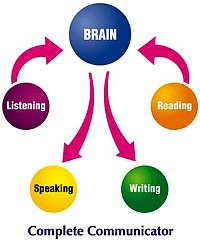 |
Learn English Locally, Apply It Worldwide! Enjoy Regular Practice |
Metaphor ~ A Writer's Best Buddy
|
How can you recognise a metaphor in your daily reading – even better… how can you use a metaphor correctly in your writing? Have you ever tried? You encounter this figure of speech commonly in your life, whether you are aware of it or not. Here you have four metaphors for life – you can probably think of many more! |
 |
Technically, in a metaphor we have an implied comparison made between two unlike things that actually have something in common. This popular figure of speech is used to express something unfamiliar (called the tenor or the topic) in terms of the familiar (the vehicle).
In the above example, since we call ‘life’ a “game” then the term ‘life’ is the tenor and “game” is the vehicle, because it brings the abstract concept of ‘life’ nearer to your brain, making it easier to visualize.
When Neil Young sings “Love is a rose”, then “rose” is the vehicle for “love”, the tenor.
A Rose
Love is a rose but you better not pick it.
It only grows when it's on the vine.
A handful of thorns and you'll know you've missed it.
You lose your love when you say the word "mine."
(Neil Young, "Love Is a Rose," 1977)
And to stay with the abstract concept of ‘love’ let us look at a few more expressive examples:
A Bull
Happiness is the china shop; love is the bull.
(H.L. Mencken, A Little Book in C Major, 1916)
A Canvas
Love is a canvas furnished by nature and embroidered by imagination. (Voltaire)
Now, this is a good starting point for you to practise with this kind of comparisons. However, don’t be fooled by its simplicity. There are quite a number of different kinds of metaphors, but we shan’t be going into technical details right now. Suffice for you to be aware of the existence of the absolute metaphor, the complex, the conventional, the conceptual metaphors, the creative and the dead metaphor, the extended metaphor, the mixed, the primary, the root metaphor, the submerged metaphor, the therapeutic and the visual metaphor – all in all a staggering 13 varieties!
English Corner Weekly E-zine
Packed with knowledge, published on Tuesdays.
Get yours here!
Our Archives:
Our lessons in the names and sounds of letters, short & long vowel sounds, CVCs, CCVCs, CVCCs, sight words, vowel and consonant contrasts, etc.
Our lessons will help increase your vocabulary, word recognition, find meaning in context, skills for TOEFL tests and other games, for fun.
Here we shall build some lessons to help you improve your writing skills.
Lots of lessons: cause & effect, comparisons, linking signals, relative clauses, presenting information, expressing emotions and grammar games, of course. We had more lessons on: intensifying adverbs and phrasal verbs, expressing various concepts such as addition, exception, restriction and ambiguity. Lately we started some exercises: likes/dislikes, frequency adverbs (twice), verb tenses, etc.
Learn how to build a website, by using the SBI! system - start from the basics, developing a site concept and a niche, supply and demand, learn about profitability and monetization, payment processing, register domain, website structure and content as a pyramid. Also learn about the tools I'm using to build this website. We also covered how to build traffic, working with search engines, building a good system of inbound links, using social marketing and blogs with the SBI system, how to use Socialize It and Form Build It, how to publish an e-zine and how to build a social network in your niche.
We looked at a few games by now: Countable & uncountable nouns, Free Rice, Name That Thing, Spell It, Spelloween, the Phrasal Verbs Game, Preposition Desert, The Sentence Game, Word Confusion, Word Wangling, Buzzing Bees, and The Verb Viper Game.
Be prepared to play and learn more pretty soon.
